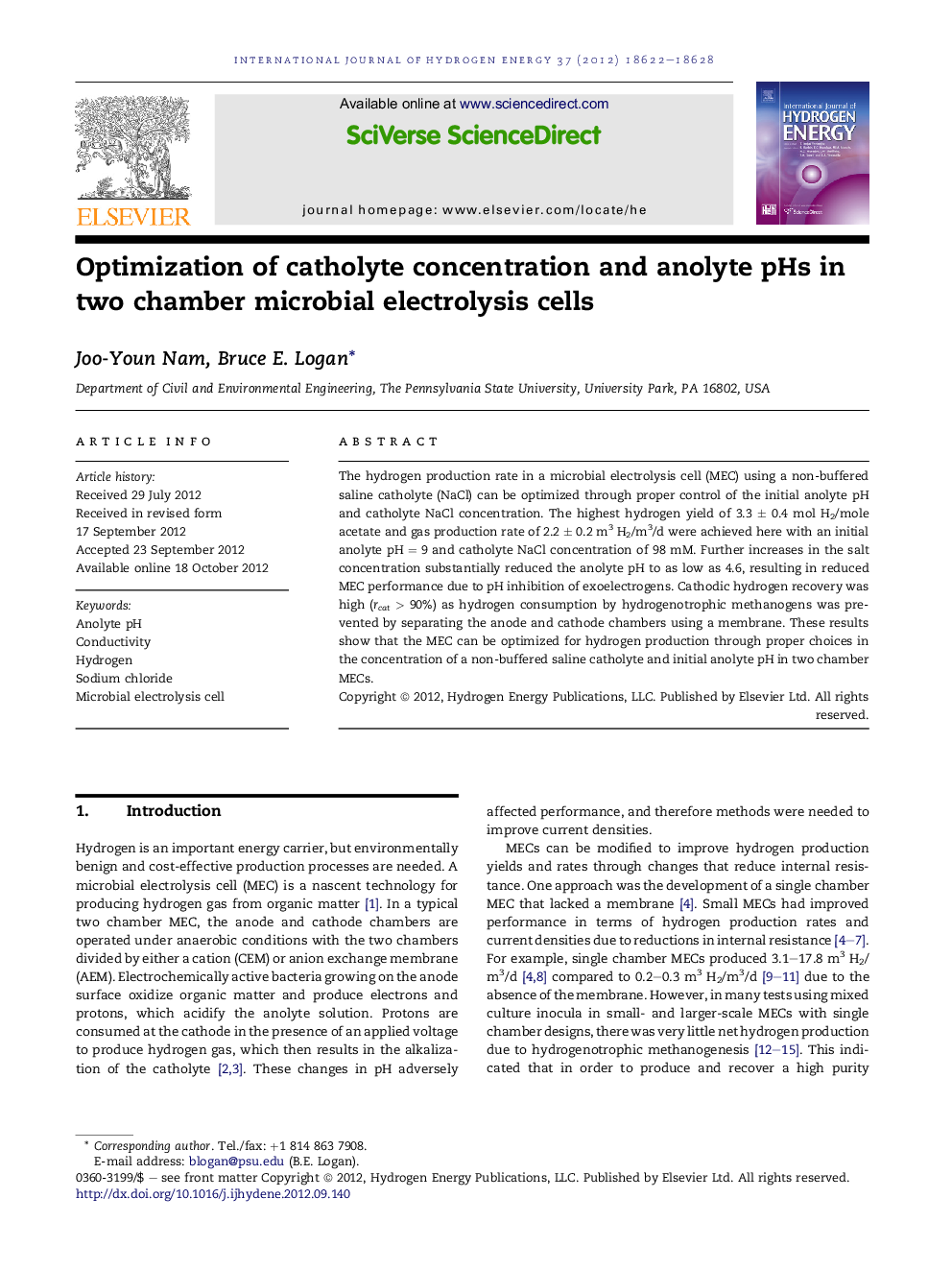| Article ID | Journal | Published Year | Pages | File Type |
|---|---|---|---|---|
| 1276067 | International Journal of Hydrogen Energy | 2012 | 7 Pages |
The hydrogen production rate in a microbial electrolysis cell (MEC) using a non-buffered saline catholyte (NaCl) can be optimized through proper control of the initial anolyte pH and catholyte NaCl concentration. The highest hydrogen yield of 3.3 ± 0.4 mol H2/mole acetate and gas production rate of 2.2 ± 0.2 m3 H2/m3/d were achieved here with an initial anolyte pH = 9 and catholyte NaCl concentration of 98 mM. Further increases in the salt concentration substantially reduced the anolyte pH to as low as 4.6, resulting in reduced MEC performance due to pH inhibition of exoelectrogens. Cathodic hydrogen recovery was high (rcat > 90%) as hydrogen consumption by hydrogenotrophic methanogens was prevented by separating the anode and cathode chambers using a membrane. These results show that the MEC can be optimized for hydrogen production through proper choices in the concentration of a non-buffered saline catholyte and initial anolyte pH in two chamber MECs.
► Hydrogen gas production was studied in a microbial electrolysis cell. ► High hydrogen production rates were achieved using a non-buffered saline catholyte. ► Increased NaCl concentration in the non-buffered catholyte enhanced hydrogen production. ► Sufficient buffering capacity of the anolyte was essential with the highly saline catholyte.
